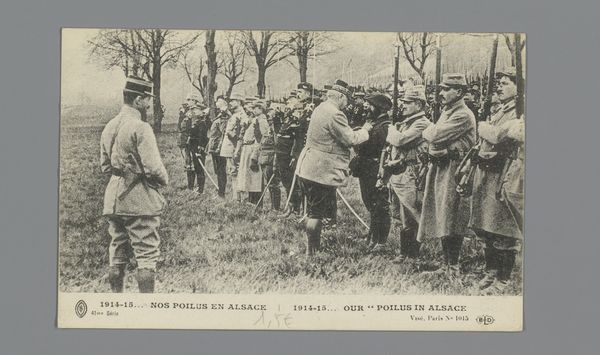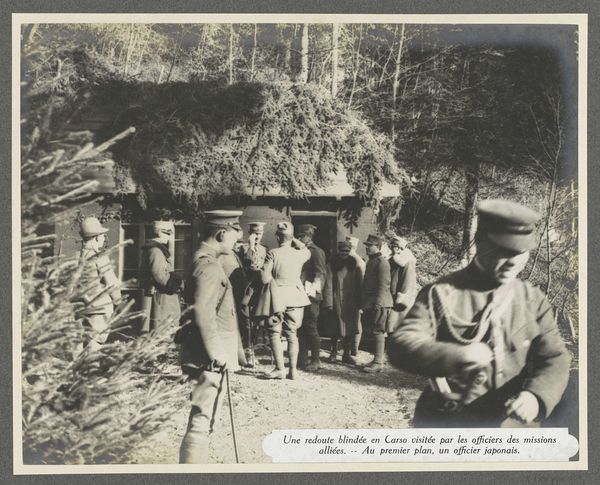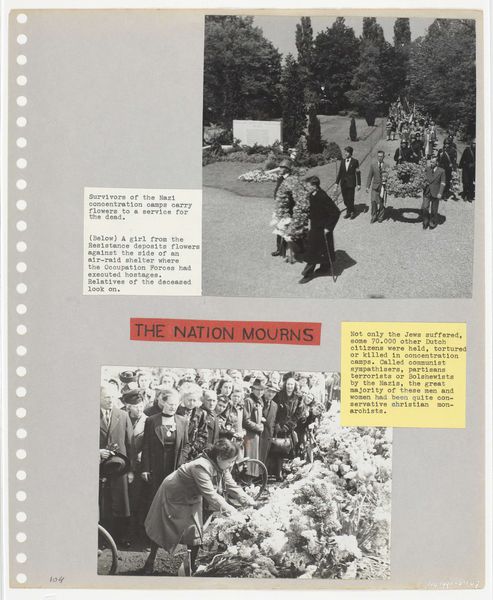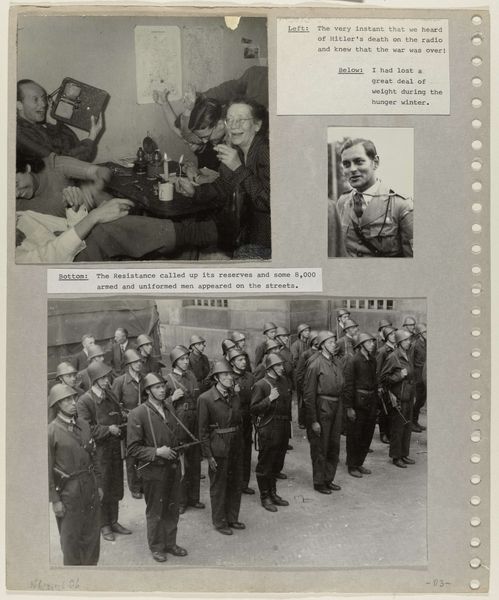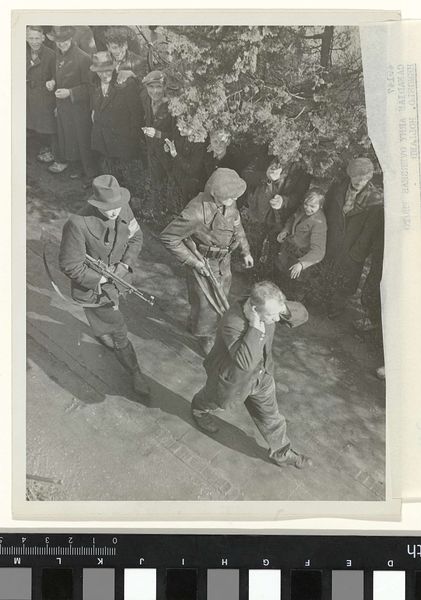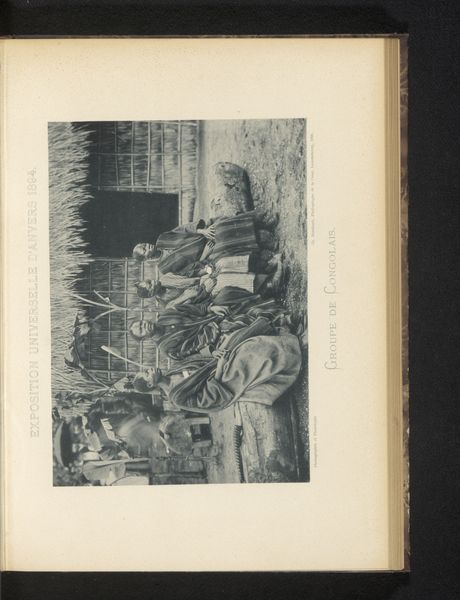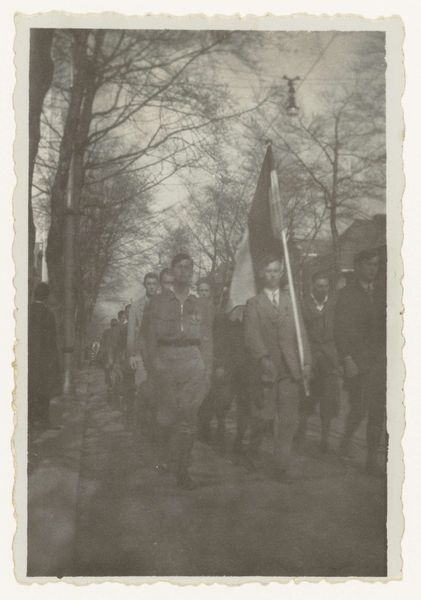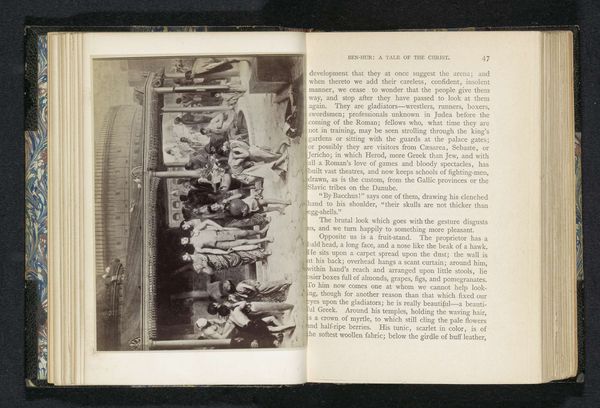
photography, gelatin-silver-print
#
portrait
#
social-realism
#
archive photography
#
photography
#
group-portraits
#
gelatin-silver-print
#
history-painting
#
modernism
#
realism
Copyright: Rijks Museum: Open Domain
This photograph, Eerste razzia op joden, is an anonymous work, and that fact alone lends a certain gravity to it. Made during the Second World War, it uses monochrome to document an event, but, as with all photographs, it’s also constructing an image of history. The grainy texture of the print feels raw, immediate. There are two distinct images, a kind of diptych. On top, the shocking spectacle of bodies on the ground. Below, the figures with their hands raised. The composition emphasizes the power dynamics at play, the stark contrast between those in control and those subjected to it. Look at the negative space around the figures, it’s like a stage, and all of us are implicated in the scene. It makes me think about photography as a tool for bearing witness, a kind of ongoing conversation about how we see and remember. It reminds me of Martha Rosler’s photomontages, the way she mixed images of war with domestic interiors, unsettling our sense of space and responsibility. Ultimately, this is a piece that reminds us that art can be a form of resistance, a way to challenge power and offer a different perspective.
Comments
No comments
Be the first to comment and join the conversation on the ultimate creative platform.
